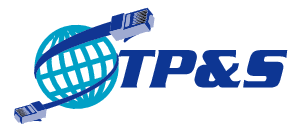Microsoft Exchange 2016 and 2019 Reach End of Support in October: What You Need to Know
As organizations continue to rely on robust email and collaboration platforms, Microsoft Exchange Server has long been a cornerstone for enterprise communication. However, significant changes are on the horizon. Microsoft has announced that both Exchange Server 2016 and Exchange Server 2019 will reach their end of support (EOS) in October 2025. This milestone marks an important moment for IT administrators and decision-makers who must plan for the future.
What Does End of Support Mean?
End of support means that Microsoft will no longer provide:
- Technical support: No official assistance for troubleshooting or technical issues.
- Security updates: Critical security patches and updates will no longer be issued.
- Bug fixes: No further improvements or fixes for software issues.
Without these updates, systems become increasingly vulnerable to security threats and compliance risks. For organizations using Exchange 2016 or 2019, this deadline is a call to action to assess their current infrastructure and plan for migration or upgrades.
Why Is Microsoft Ending Support?
Microsoft’s decision aligns with its software lifecycle policy, which ensures continued innovation and the adoption of newer technologies. By phasing out older versions, the company encourages businesses to migrate to more secure, scalable, and feature-rich solutions like Exchange Online or the latest on-premises offerings.
Options for Businesses Moving Forward
To prepare for this transition, businesses have several options:
- Migrate to Microsoft 365 and Exchange Online:
- This option eliminates the need for on-premises infrastructure and provides access to a suite of cloud-based services, including Teams, SharePoint, and OneDrive.
- Benefits include regular updates, enhanced security, and simplified management.
- Upgrade to the Latest Exchange On-Premises Version:
- Microsoft has announced plans for the next version of Exchange Server, which will require a subscription-based model.
- This option is suitable for organizations with strict regulatory or operational requirements for maintaining on-premises systems.
- Hybrid Deployments:
- A hybrid solution allows businesses to combine on-premises Exchange with Exchange Online.
- This approach is ideal for organizations transitioning to the cloud at their own pace.
Steps to Prepare for Migration
- Assess Your Current Environment:
- Conduct an inventory of existing servers, licenses, and dependencies.
- Identify potential challenges such as legacy hardware or outdated integrations.
- Plan and Test Your Migration:
- Develop a migration timeline that minimizes disruption.
- Test the migration process in a controlled environment.
- Educate and Train Staff:
- Ensure IT teams are familiar with new tools and platforms.
- Provide end-user training to ease the transition.
- Engage a Trusted Partner:
- Work with a Microsoft-certified partner or consultant to guide the process.
Key Takeaways
The end of support for Microsoft Exchange 2016 and 2019 is an opportunity to modernize your organization’s email infrastructure. Whether you choose to migrate to Exchange Online, upgrade to the next on-premises version, or adopt a hybrid model, early planning is essential to avoid disruptions and ensure business continuity.
By taking proactive steps now, you can leverage new technologies to enhance collaboration, improve security, and position your organization for future success.
For detailed guidance and resources, visit Microsoft’s official Exchange lifecycle page or consult with a Microsoft-certified professional.


